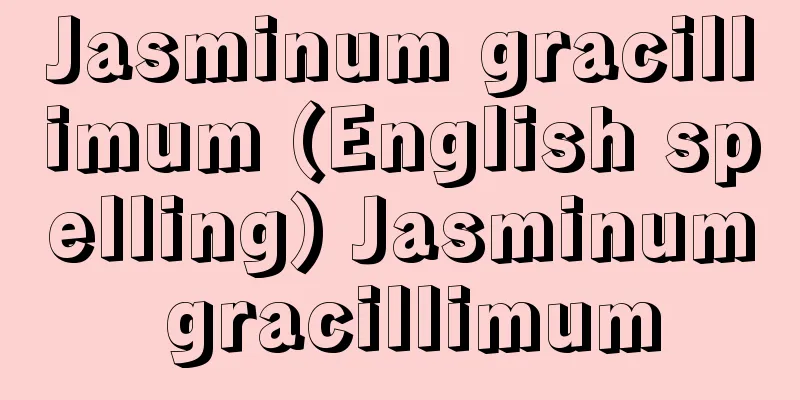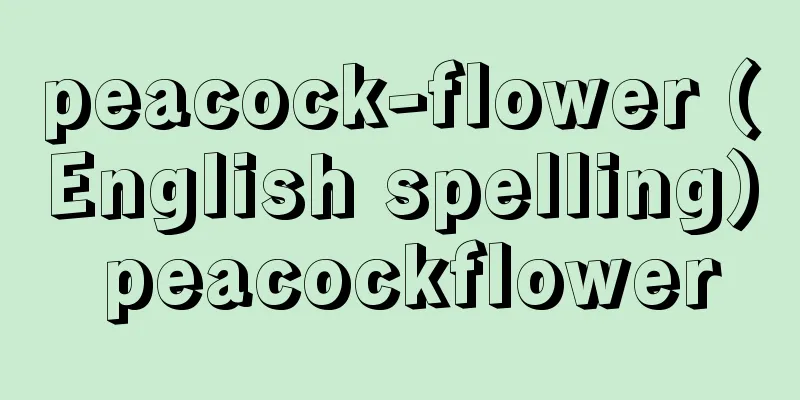Fiction - Gesaku

|
A term referring to a group of early modern novels. In the early modern period it was read as "kesaku" or sometimes as "kisaku", but towards the end of the Edo period the reading "gesaku" gradually became more common, and has since become the reading we use today. Originally it was a general word common to all Japanese, Chinese, and modern times, meaning something written for fun and the works involved, but in the late early modern period it was frequently used by intellectuals to refer to their hobby novels and joruri, and eventually became a general term for a new style of novel that emerged at the time. In terms of style it includes sharebon, kokkeibon, kibyoshi, gokan, yomihon, and ninjyobon, and in the narrow sense it can also refer to the first three types of humorous literature. The authors of this group of novels are called gesaku. Its history can be divided into two periods. The first period is from around the Horeki era (1751-64), when the center of the novel world began to shift from Kamigata to Edo, to the time of the Kansei era's ban on heretical learning (1790), and the second period is from then through the end of the Edo period to the early Meiji period (around 1885), when vestiges of his style still remained. In the early period, when the society of the early modern period had finally become congested and the right people could not find the right jobs, and literati hobby was rampant, intellectuals who took up popular literature as a side job appeared. At first, people from Kamigata such as Tsuga Teisho and Ueda Akinari participated, and many others, such as Hiraga Gennai, Yamaoka Matsuake, Ota Nanpo (Shokusanjin), and Koikawa Harumachi, who moved to Edo immediately. New styles such as early yomihon, sharebon, early kakeibon (talk book), and kibyōshi were born, and although it was initially a pastime among a small number of enthusiasts, it gradually became popular. From a position detached from society, they adopted the attitude of “ugachi”, and because it was a side job, they had little to do with life, and competed with each other for the best writing, focusing mainly on “shukō” composition. However, like an intellectual, he excelled in intellect and sensibility, and some of his works showed a certain ideological ideology, making his works high-class despite being playful literature. Around the time of the Kansei era (1789-1801), intellectuals withdrew from the world of novels, and after them, professional or semi-professional authors who had studied early gesaku, such as Santou Kyoden, Kyokutei Bakin, Jippensha Ikku, Shikitei Sanba, and Tamenaga Shunsui, appeared, producing later yomihon, gokan, late kakukeibon, and ninjyobon. Around that time, the number of general readers with low levels of knowledge increased, and publishing organizations came into play, causing the quality of the works to decline. The confrontation with life became weaker, and "ugachi" became less critical, with taste taking priority, and complex and intricate techniques such as "chakashi," "mitate," "naimaze," and "jiguchi" ran rampant. As the trend of the times changed, he made virtuoso efforts in that direction, and brought out the characteristics of the Japanese language to the limit. However, later comic writers who became writers themselves combined a side of them that presented a subservient attitude to their readers with a kind of literary pride that had existed since the earlier comic writers, resulting in a so-called comic writer's temperament of self-deprecating arrogance. In order to appeal to the masses of readers, the stubborn and heartless attitude of the earlier period disappeared, and there was also a return to an attitude of sincere sympathy for goodness and beauty. In the early Meiji period, the trend of the end of the Edo period continued with the likes of Kanagaki Robun and Sansan Tei Arindo, but as Western literary views and styles were imported, the world of novels broke away from this trend and modernized, with comic novels becoming creations and authors becoming writers. However, it should not be overlooked that during this period of comic novels, attempts were made to use colloquial language, long novels, character and psychological descriptions (although still insufficient), and even to state the principles of life in stories, as in the case of Bakin, and that the foundation for the import of new Western styles was gradually developing. Rhapsody, kyoka, senryu (a type of poetry based on poetry), and hanashibon (a type of storybook), in which comic writers also participated, all have the same expressive characteristics. [Nakamura Yukihiko] “Gisakuron” by Yukihiko Nakamura (1966, Kadokawa Shoten) ▽ “Gisaku Kenkyu” by Mitsutoshi Nakano (1981, Chuokoronsha)” Source: Shogakukan Encyclopedia Nipponica About Encyclopedia Nipponica Information | Legend |
|
近世小説の一群をさしていう用語。近世では「けさく」、ときに「きさく」と読み、幕末に入って「げさく」の読みがしだいに多く、今日の読みとなった。元来は、戯れにつくること、またその作品の意味で、和漢古今に共通した一般語であるが、近世後期に入って、知識人が余技の小説、浄瑠璃(じょうるり)をいう際にしきりに使用し、やがて当時新しく発生した様式の小説の総称となった。様式では、洒落本(しゃれぼん)、滑稽本(こっけいぼん)、黄表紙(きびょうし)、合巻(ごうかん)、読本(よみほん)、人情本を含み、狭義では前三者の滑稽文学をさすこともある。この小説群の作者が戯作者である。 その歴史は2期に分けられる。前期は、小説壇の中心が上方(かみがた)から江戸へ移動し始めた宝暦(ほうれき)(1751~64)ごろから寛政(かんせい)異学の禁(1790)のころまで、後期はそれから幕末を経て、その作風の名残(なごり)のあった明治初期(1885ころ)までである。 前期では、近世社会がようやく渋滞して、適材が適所を得ずに文人趣味がはびこるなかで、余技として俗文学に筆をとる知識人が出現した。初めは都賀庭鐘(つがていしょう)、上田秋成(あきなり)ら上方の人々、ただちに江戸に移って平賀源内(ひらがげんない)、山岡浚明(まつあけ)、大田南畝(なんぽ)(蜀山人(しょくさんじん))、恋川春町(こいかわはるまち)など多くが参加した。初期読本、洒落本、初期滑稽本(談義本)黄表紙など新様式が誕生し、初めは少数の同好者間の遊戯であったが、しだいに一般化した。彼らは社会と遊離した立場から、「うがち」の姿勢をとり、余技のゆえに人生との対決の乏しいまま、「趣向」の構成が主となり、文章の妙を競った。しかし知識人らしく知性・感性に秀で、なにがしかの思想性の現れたものもあり、遊戯文学ながら高級なものであった。 寛政(1789~1801)のころから知識人たちが小説壇から身を引き、そのあとに、前期戯作に学んだ山東京伝(さんとうきょうでん)、曲亭馬琴(きょくていばきん)、十返舎一九(じっぺんしゃいっく)、式亭三馬(しきていさんば)、為永春水(ためながしゅんすい)など専門または準専門の作者が出現し、後期読本、合巻、後期滑稽本、人情本がつくりだされる。そのころには知識程度の低い一般読者が増加し、また出版機構がその間に介在して、作品の品位は低下する。人生との対決はますます薄く、「うがち」も批判性が少なくなり、趣向第一となって、「ちゃかし」「見立(みたて)」「ないまぜ」「地口(じぐち)」など技巧的なものが複雑に跳梁(ちょうりょう)している。時代の風として、その方面に名人芸的に努力したので、日本語の性格を極限にまで発揮させてもいる。しかし売文家となった後期戯作者は、読者に卑屈な姿勢を呈する一面と、前期戯作者以来の一種の文人の誇りが合して、卑下慢(ひげまん)という、いわゆる戯作者気質をもつに至った。また大衆読者に対するために、偏屈で非情な前期の風がなくなり、善や美にすなおに共感する風を回復するなどのこともあった。 明治初期も、仮名垣魯文(かながきろぶん)、山々亭有人(さんさんていありんど)などと幕末の流れは続いたが、西欧の文学観と作風が輸入されるにしたがって、小説壇はこの風潮から脱出して、戯作は創作に、作者は作家にと近代的に変化していった。しかしこの戯作時代に、口語的表現、長編小説、なお十分でないが性格描写、心理描写、さらには馬琴のごとく人生の理法を作中に述べるなどの試みがみえて、西欧の新作風の輸入の下地をなすものがしだいに成長したことを見逃してはならない。戯作者たちも参加した狂詩、狂歌、川柳(せんりゅう)、咄本(はなしぼん)なども、同じ表現上の特色をもっている。 [中村幸彦] 『中村幸彦著『戯作論』(1966・角川書店)』▽『中野三敏著『戯作研究』(1981・中央公論社)』 出典 小学館 日本大百科全書(ニッポニカ)日本大百科全書(ニッポニカ)について 情報 | 凡例 |
Recommend
window seat
…In the second half of the 17th century, a backle...
Reversible change
When an object (or system of objects) changes fro...
Hypersensitivity
...Gold sensitization is usually used in combinat...
Cryptanthus acaulis (English spelling)
… [Takabayashi Masatoshi]. … *Some of the termino...
Bridgman - Percy Williams Bridgman
American physicist. Known for his work in the fie...
Iwaki Lowlands - Iwaki
...The Soso lowlands in the northern part of the ...
Cotton balls - Menyaku
Nitric ester obtained by reacting cellulose with ...
Lifesaving measures - lifesaving measures
...The stages of resuscitation can be divided int...
Curlew River
…This opera has been translated and performed in ...
Akhbarism - Akhbar is
...The authoritative writings of this sect were c...
Coastal coalfields - Engantanden
… [Type and size] Coalfields come in all sizes de...
Chichibu Basin
A roughly rectangular tectonic basin in the center...
Aremonite - Aremonko
...More than 30 kinds of elemental minerals are k...
Asatsuma-so
...Asatsuma-go appears in the Wamyōshō as one of ...
Kusasukikazura - Kusasukikazura
A perennial plant of the lily family (APG classif...






![Sakegawa [Village] - Sakegawa](/upload/images/67cbaa12c1f71.webp)


